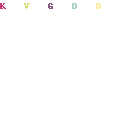Six Reps vs/ Twelve for Strength and Muscle (*study)
 Bodybuilders look like bodybuilders because of their exercise selection and their repetition ranges, while powerlifters, on the other hand, are strong for the same reasons (i.e. involving the selection of different exercises from bodybuilders and lower rep schemes). Or something like that. We can draw a pretty distinct seperation between adaptations gained from low (1-3) rep training versus high (15-25) rep training, but what about somewhere in the middle? What about doing sets of six versus sets of twelve? As it turns out, there’s very little difference when we’re talking about that range, even though one is clearly twice as many reps as the other.
Bodybuilders look like bodybuilders because of their exercise selection and their repetition ranges, while powerlifters, on the other hand, are strong for the same reasons (i.e. involving the selection of different exercises from bodybuilders and lower rep schemes). Or something like that. We can draw a pretty distinct seperation between adaptations gained from low (1-3) rep training versus high (15-25) rep training, but what about somewhere in the middle? What about doing sets of six versus sets of twelve? As it turns out, there’s very little difference when we’re talking about that range, even though one is clearly twice as many reps as the other.
This makes a lot of sense to us, as we all know people who are relatively the same when it comes to single reps, but can absolutely kill a set of 12 with weight that would crush someone who wasn’t very good in that range; and we all know someone who can handle huge loads in the 6ish neigborhood, but struggles with anything over ten.
We recently stumbled on a bit of research that examined recreationally active young adults (62 participants, more women than men), and had them do bench presses and squats for either three sets of either 6 or 12 reps. At the end, strength gains were almost exactly the same, measured by 1RM in the respective exercises, as was weight gain.
Comparison of Two Resistance Training Protocols, 6RM versus 12RM, to Increase the 1RM in Healthy Young Adults. A Single-Blind, Randomized Controlled Trial
Reidar Aarskog1,*,Alexander Wisnes1,Kjersti Wilhelmsen1,Aud Skogen1,Jan Magnus Bjordal1,2
Purpose
The purpose of the study is to compare the effect in healthy young adults of two resistance training protocols, six-repetition maximum (RM) versus 12RM on maximum strength (1RM).
Method
A single-blind, randomized controlled trial was used in the study. Sixty-two healthy physical therapy students, with age (mean [+standard deviation]) 23 (+2.6) years, weight 67.4 (+11.7) kg and height 171.7 (+8.4) cm, of both genders who were recreationally active, but not training systematically, volunteered to participate in the study. They were randomized into two groups (group 1: 24 women and 8 men; group 2: 23 women and 7 men) by a block randomization procedure that ensured equal gender distribution. Sealed envelopes were used to conceal allocation to groups.
Interventions
Group 1 did three sets of 6RM of each exercise, and group 2 did three sets of 12RM. Both groups performed the exercises twice per week for 8 weeks with 3 minutes rest between sets and exercises. Primary outcomes were maximum strength defined as one-repetition maximum squat (1RMSq) for lower-body strength and bench press (1RMBp) for upper-body strength. Secondary outcomes were body weight and Uro Kaleva Kekkonen (UKK) Fitness Index.
Results
Both groups increased strength significantly (p < 0.001) in 1RMSq (6RM 13.6%, 12RM 13.5%) and 1RMBp (6RM 9.2%, 12RM 8.4%). There was no significant difference in the change between the two groups, no change in body weight and only a small increase in UKK Fitness Index.
Conclusion
Both 6RM and 12RM training protocols improve maximum strength in recreationally active healthy young adults, with no significant difference between the protocols.



1 Comment. Leave new
Especially for CrossFit purposes, would have been interesting to see results of max weight and max speed tested in both rep ranges for both groups. Since the body adapts specifically to training, single rep max was only a collateral result for both, but specific adaptation should be present for both groups.
Would have also been interesting to see result of a third group training both rep ranges to test the constantly varied/shock principle/conjugate method (even specific strength/speed can often be developed best by varied stimulus to break plateaus).
When programming a CrossFit athlete, case for both ranges probably exists, supported by need to be proficient in both, as well as by the benefits of varied stimulus.